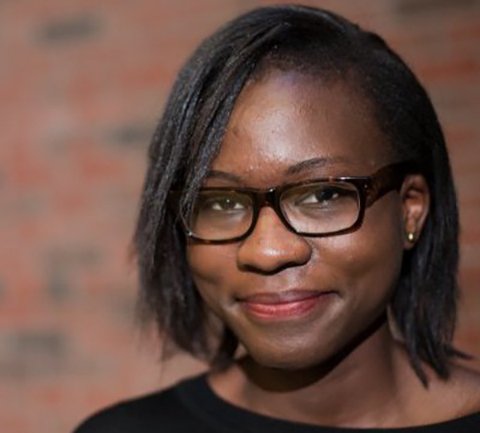Scholarships encourage transfer student to solve renewable energy problems

Hard work pushed her to new limits
June 12, 2017
All her life, Mbathio Diagne has pondered the concept of renewable energy. Growing up in Dakar, Senegal, she was exposed to an energy-deprived environment coupled with constant power outages. The electrical engineering student, who moved to the United States two and a half years ago, hopes to solve this issue.
“I never understood why we were not using solar energy,” Diagne said of her home country. “That is why I decided to become an electrical engineer. I wanted to know why and hopefully find a solution to the problem.”
A recipient of the College of Science and Engineering’s James A. Zeese Scholarship, Diagne transferred from Minneapolis Community and Technical College with an associate degree in mathematics. She will begin her senior year this fall.
Networking and involvement
She decided on the University of Minnesota because of its North Star STEM Alliance, an initiative funded by the National Science Foundation that is intended to double the number of underrepresented students of color receiving bachelor’s degrees in science, technology, engineering and math (STEM) in a five-year period. The University’s North Star STEM Alliance Bridge to Baccalaureate program consists of networking events with professors, advisors, and students at the U of M.
In addition to these networking opportunities, hard work has pushed her to new limits at the University of Minnesota.
“I have to put more effort into everything I do and have realized that the different workloads call for different learning techniques,” Diagne explained.
“I genuinely like the environment [at the University of Minnesota]. It is helping me reach my full potential,” Diagne added.
In addition to being a NorthStar STEM Scholar, Diagne is the secretary of the National Society of Black Engineers (NSBE) University of Minnesota chapter. She credits the organization for taking her in as a transfer student and welcoming her to their “family” at the University.
Last summer, Diagne was also able to intern at the National Renewable Energy Laboratory, where she designed software for communication between electroluminescence imaging cameras and computers. Inspired by this opportunity, Diagne hopes to attend grad school after getting her bachelor’s degree in electrical engineering.
Impact of scholarships
Amidst her academic endeavors and extracurricular involvements, Diagne struggled for a while having to work 40+ hours per week in order to support herself financially. With 17 credits and two jobs, each week resulted in more exhaustion.
However, scholarships have significantly lifted this weight off of her shoulders. Now only working 19 hours per week, Diagne can allow herself time to focus on the academics and extracurricular activities that inspire her to move forward.
“I have a passion for renewable energy, but there are many ways in which I can get to that point,” Diagne said.
“I am planning to focus on my academics, gain as much experience as possible as an undergrad, and ultimately, go to grad school,” she said.
With help from scholarships and various experiences at the U of M, Diagne is on the road to getting her bachelor’s degree and solving the world’s grand challenge of renewable energy—maybe even in her home country of Senegal.
Story by Olivia Hultgren
If you'd like to support University of Minnesota College of Science and Engineering students, visit our CSE Giving website.
